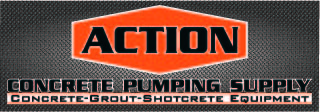| Bob | 02-15-2008 | comment profile send pm notify |
|
SAFETY ATTITUDES & BEHAVIOR
Overcoming Bad Influences
We safety people try our hardest to influence behavior constructively. But in trying to change behavior, we are fighting a lifetime of conditioned training. Most workers learn early the habits of hurrying, neglecting anything that slows production and ridiculing those who take due caution in their daily work habits. This conditioning is often reinforced by laziness, when it takes extra effort to work safely. Laziness often greases the skids for creating unsafe conduct. Once this conditioning becomes a comfortable social \"norm\" in the workplace it becomes extremely hard to change. Worse yet, as employees move to other jobs, they take the norms with them and infect others in their new workplace - similar to the way the flu is spread at the mall. It\'s a fact of life that bad habits are much easier to form than good ones. So how do we, as safety professionals, overcome all of this? Sometimes it pays to guide people to look at why they do the things they do. Finding Your Workers\' Personal Source of InfluenceIt\'s a good idea to occasionally work a little introspection into your safety meetings. Ask your audience to think hard about their past work experience and identify (without naming names) a moment in their past when they were told by a co-worker, senior or supervisor that the safety rules didn\'t matter and merely slowed things down. Maybe they were told that it was too hot to use PPE. Perhaps someone made fun of their safety glasses until they no longer wanted to wear them. Ask the audience if they\'ve ever attended a safety meeting that was derailed by a cranky or argumentative co-worker who deliberately wanted to be a pain. Sadly, such people do exist; and they teach other, especially younger, workers by their example. As a result, this kind of behavior can create cultural norms that last for years. An ExampleI distinctly remember an incident on my very first job that affected my attitude toward safety. A foreman told me to change some flourescent lights. But instead of using a ladder, he wanted me to be lifted on the forks of a forklift with no fall protection. When I hesitated, he bristled and told me that I would \"do it or go home.\" I was young and I needed the job. So I did an incredibly stupid thing. I complied. The lesson I learned at the time was that speed was paramount; safety was a luxury. Both co-workers and management expected compliance to give way to the needs of production. Any idea to the contrary was not only ignored but met by threats of retaliation. It was years before I came to see that these norms were wrong and that safety was supremely important. And, at every turn, I resisted challenges to the norm before I finally gave up my unsafe attitudes and habits. Why It Helps to Reflect on the PastClearly, the norm that production is more important than safety didn\'t do me any good and could have done me serious harm. But these memorable moments in which norms are formed happen all the time. They are what give rise to the safety attitudes we fight against every day. They are reinforced when management turns a blind eye and encourages production volume over sound safety practices. Outside of training, the only natural counter to this conditioning on the side of safety is when a safety device or procedure dramatically saves someone. When workers say, \"I decided that it wasn\'t necessary... ConclusionSafety professionals also fall victim to influence. We must be vigilant about this and occasionally reflect to see what\'s driving our actions. Sometimes we\'re compelled or told to \"tone it down\" in our teaching and enforcement, rather than buck the tide. And our job is a never-ending, uphill struggle. We get tired. When this happens, we are susceptible to having our standards eroded. We don\'t fight for change quite so hard. Compromise creeps into the picture. As professionals, we should encourage each other to join an organization, professional society, make contacts and friends in the safety field. Subscribe to publications that inform, instruct and reinforce you. Doing so keeps our proper focus and direction. We must be unwavering in the eyes of those we work with and/or for. We must be the influence, not the other way around. |
||
| Bob | 02-15-2008 | reply profile send pm notify |
|
I put the above post that I get from one of my sources of material, on the board for one reason. It seems to me that when you are on a job site; you are the safety professional about pumps on that site. Please be a positive influence. Your co-workers might not even think about it but they are getting their safety tips from you. |
||




















.jpg)
.gif)

.jpg)









.jpg)








